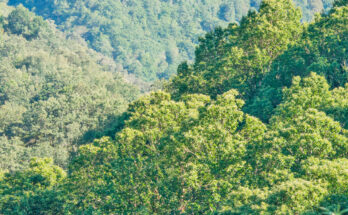It has been half a century since the Convention on Wetlands of International Importance came into force, better known simply as the Ramsar Convention because it was in that Iranian city where it was signed and adopted on 2 February 1971. That agreement was born with the aim of protecting wetlands, promoting their wise use and fostering international cooperation, especially in transboundary areas. A key tool for carrying out this task was the creation of a list of wetlands of international importance (Ramsar sites), which currently includes more than 2,400 places around the world whose importance transcends the local, regional and even state level. Galicia is also present in this Ramsar list with five wetlands that have been incorporated between 1989 and 1994. All five are also part of the Natura 2000 Network.
Umia-O Grove Intertidal Complex
Vilagarcía de Arousa, Cambados, Meaño, O Grove, A Illa de Arousa, Ribadumia and Sanxenxo
2.561 hectares
Ramsar Site since December 1989
The area formed at the mouth of the Umia river and the eastern end of the O Grove peninsula gives its name to this wetland, but the area included in the Ramsar convention is also made up of two other places: the Bodeira lagoon, located on the northern coast of O Grove, and Punta Carreirón, located at the southern end of A Illa de Arousa. Thus, the only Ramsar site in the province of Pontevedra affects seven municipalities and includes areas with very different characteristics: a mud lagoon with islets in its interior, a small coastal lagoon, a huge sandy area, a rocky area… This means that a wide variety of plant species can be found there, including some endemic examples. Waders and ducks, both passing through and wintering, can be seen in large numbers in these areas, which are equipped with hiking trails and observation points.
Ortigueira and Ladrido Estuaries
Cariño and Ortigueira
2,920 hectares
Ramsar site since December 1989
The coves of Ladrido, Mera and Caleira are the three areas of greatest ornithological interest in this Ramsar site formed by the estuary formed by the mouths of the rivers Mera and Baleo, and other smaller watercourses. The large presence in the area of migrant birds such as wigeons is one of the main reasons for the inclusion of this area in the wetland protection convention. Waders such as oystercatchers and curlews can also be seen, and mammals such as otters have also been sighted. Paths and other spaces for walking open the doors to this wetland framed by the mountains of the A Capelada and A Coriscada ranges.
Lagoon and sandy area of Valdoviño
Valdoviño
485 hectares
Ramsar site since March 1993
The lagoon of Valdoviño (or A Frouxeira), the dune system and the beach of A Frouxeira give shape to this complex of great interest both for hosting important plant and animal species to ensure the biological diversity of an area, and for supporting vulnerable or endangered species. The latter include more than a dozen species of vertebrates with a high degree of threat, such as the bittern (of the heron family), which can be seen during the autumn and winter months, and invertebrates such as damselflies (of the dragonfly family). Amphibians such as the long-tailed salamander and the long-tailed frog and birds such as the shag, spoonbills, kentish plovers and grey plovers can also be seen in the area.
Corrubedo Complex
Ribeira
550 hectares
Ramsar site since March 1993
Two strings of dunes, with its emblematic mobile dune, one kilometre long, more than 200 metres wide and up to 20 metres high, are responsible for the formation of two lagoons (one of salt water and the other of fresh water) and an extensive area of marshes. The whole area also forms a natural park which receives more than 300,000 visitors a year and within its boundaries a wide variety of flora can be found. Numerous species of amphibians, reptiles and mammals, as well as important groups of migratory birds make the place an exceptional spot for contemplating the fauna. In addition, the park has a visitor reception centre, an interpretation centre and several signposted routes to make the experience of those who come here as complete and satisfactory as possible. The Corrubedo complex is located in the municipality of Ribeira in A Coruña, at the end of the peninsula of O Barbanza.
Ribadeo estuary
Ribadeo, Vegadeo and Castropol
1,740 hectares
Ramsar Site since October 1994
Located on the border between Galicia and Asturias and delimited by the municipalities of Ribadeo (on the Galician side) and Vegadeo and Castropol (on the Asturian side), the Ribadeo estuary stands out as an enclave of special interest for migratory waterfowl. It is home to both species that use it as a wintering site and others that stop there on their journey to other latitudes or in search of shelter in stormy weather. This is the case of the pintail duck, the curlew and the sandpiper. You can also see other animal species of great importance such as the otter. Eels, salmon and sea bream are some of the fish that inhabit these waters, whose importance also lies in the fact that they have one of the largest underwater meadows of zostera marina in the whole of the Cantabrian Sea.





